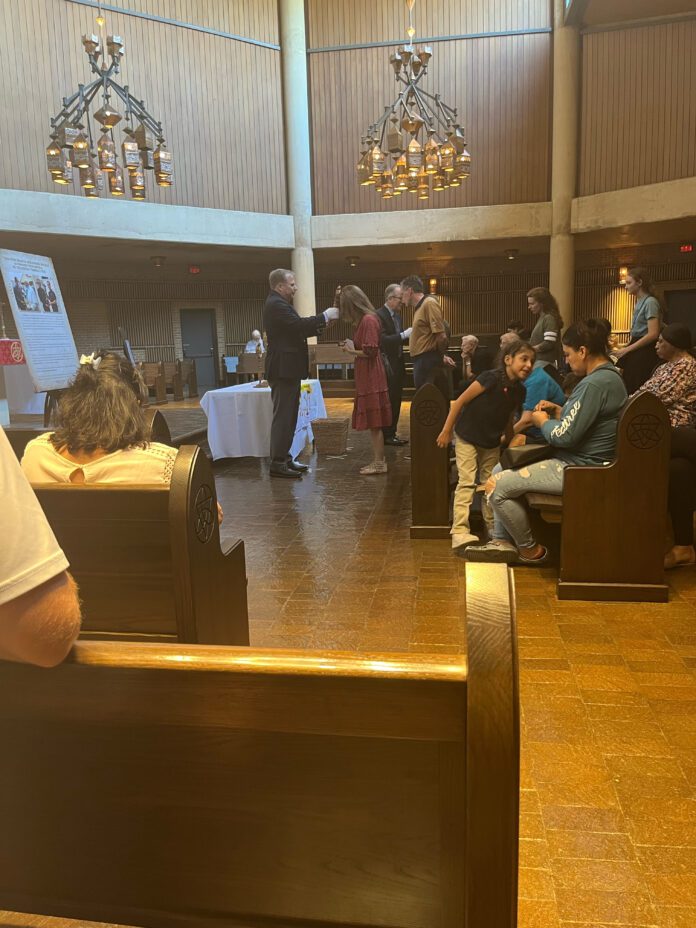Last week, the Anscombe Society hosted a discussion of an article written by Mark Regnerus titled, “What The Surge in LGBTQ Self-Identity Means.” A day later, Padre Pio’s relics were brought to the Church of the Incarnation. The concurrence of these events highlights both a serious warning cry and a spring of hope for our world.
In his article, Regnerus noted that there has been an uptick in people who identify as non-heterosexual. People are thirsting for something to identify with.
He also noted that there is a strong correlation between abortion activists and supporters of treating adolescent gender dysphoria with some kind of physical transition. What these two groups of people have in common is their understanding that a person has complete control over his or her body above all else.
In the LGBTQ community, the view of the human person constitutes an entirely new religious system. In this religion, I am my own creator. I turn to myself to find my identity; I can do what I want in order to align myself with the identity I choose. I am in complete control of everything concerning me.
In reality, I am not my own creator. I do not know the intricacies of my being the way that a clockmaker knows one of his clocks. There is something irreducible about my person, as St. John Paul II would put it, an unrepeatable and impenetrable part of my being only fully known to God my Creator. To attempt to claim the role of Creator without being Him would be to falsely make myself a god.
What the surge in LGBTQ self-identity means, in part, is that more and increasingly younger people are turning to the doctrine of self-worship in an often innocent attempt to simply find who they are. They champion a society that prizes the self over everything: bodily integrity, reason and even the lives of its most vulnerable members.
It’s a rather bleak picture of the world. A sickly priest from Pietrelcina and his 50-year-old-blood stains could be a source of hope.
Padre Pio died 55 years ago after spending his entire life in sacrificial imitation of Christ. He became a Capuchin friar at age 16 and fully embraced his vocation as a priest, spending up to 16 hours a day hearing confessions. He had a profound understanding of what St. John Paul II later referred to as “The Law of the Gift,” that “man cannot fully find himself except through a sincere gift of himself.”
Padre Pio gave of himself so profusely and imitated Christ so closely that he received and suffered from the wounds of our Lord for 50 years. He gave his body for people to see Christ in him. Padre Pio recognized his Creator as the source, meaning and fulfillment of his identity, and understood this to be a source of liberation, not restriction.
Padre Pio is a model of outward compassion and of the self-gift that is the antithesis to the inward, self-obsessed movement of our culture. Furthermore, he continues to give his body as gift through his relics.
UD is not unaffected by the self-worship phenomenon. There are souls on this campus aching for an identity, in danger of losing themselves in an inward spiral of self-idolization. But God willed each person for his or her own sake and He is the source of our deepest identity.
These truths, if taken seriously enough, should lead us to imitate Padre Pio and, ultimately, Christ in genuine, radical self-gift. The blood of Padre Pio’s stigmata, still stained on cloth, invites us to join him in offering our hands, our feet, our sides, our whole selves to Christ and to our brothers and sisters.

while appreciative of the faithfulness of the Catholic community, this article provides a superficial “understanding” of queer/LGBT people by reducing them to people who want to have unjust and selfish (implied and not) “control” of themselves. There is NO consideration for the struggle that comes with being a person in a community that ostracizes, critiques, bullies and harasses them while preaching love, goodness and graciousness. And to then equate it to attempting to make a ”false god” of themselves is absurd – the desire to find community and people who share in your struggle is simply HUMAN and not an attempt at “building a new religion.” In your attempt to persuade the community to join you in your worship, you push them away by demonizing them.
Such a great example of blowing smoke and stretching something into a form that makes absolutely no sense. What does Padre Pio’s stigmata have to do with stigmatized people who don’t fit heterosexual roles and identity?